Author: Phil Rusher
Since its inception, beer has evolved due in large part to available resources and technology, which has ultimately led to the emergence of distinct regional beer styles. One example of this is in the way certain cultures handled the malting process, and in particular, the process in which the malted grain was dried. Before modern kilns were widely available, maltsters relied on more direct methods of drying malt including placing it over an open flame where wood was the primary heat source. This wasn’t a gimmick, but rather a reliance on what was available to accomplish a task, and the resultant beers just so happened to have a smoky character that many drinkers eventually took a liking to.
Situated in Bamburg, Germany, Schlenkerla Brewery has held to the tradition of drying their grain over a fire fed by beechwood logs to produce their well known Rauchbier. Likely inspired by this historic brewery, larger maltsters offer brewers around the world malt smoked with beechwood. However, similar to the way particular varieties of wood can be used to impart varying flavors to smoked meat, modern maltsters are also smoking their malt with different types of wood including that which comes from cherry trees. Whereas beechwood smoked malt is said to impart notes of smoky vanilla and honey, malt smoked with cherrywood purportedly adds a sweet and subtly fruity character to beer.
I’m a fan of most things smoky, from meat and peaty Scotch to classic German Rauchbier. Having consumed my fair share of Schlenkerla, I began to wonder about the impact malts smoked with different types of wood might have on beer. I hadn’t brewed a smoked beer of my own and had heard good things about cherrywood smoked malt, so I jumped at the chance to put this one to the test!
| PURPOSE |
To evaluate the differences between smoked beers made with either beechwood smoked malt or cherrywood smoked malt.
| METHODS |
Using the BJCP style guidelines as my starting point, I designed what seemed to be a suitable Rauchbier recipe, each one receiving identical amounts of either cherrywood or beechwood smoked malt.
Raucher
Recipe Details
| Batch Size | Boil Time | IBU | SRM | Est. OG | Est. FG | ABV |
|---|---|---|---|---|---|---|
| 5.5 gal | 60 min | 29.5 IBUs | 15.4 SRM | 1.053 | 1.014 | 5.1 % |
| Actuals | 1.053 | 1.015 | 5.0 % | |||
Fermentables
| Name | Amount | % |
|---|---|---|
| BEST Munich (BESTMALZ) | 8 lbs | 74.85 |
| Cherrywood or Beechwood Smoked Malt | 2.5 lbs | 23.39 |
| BEST Black Malt (BESTMALZ) | 3 oz | 1.75 |
Hops
| Name | Amount | Time | Use | Form | Alpha % |
|---|---|---|---|---|---|
| Hallertau Magnum | 13 g | 60 min | Boil | Pellet | 13.2 |
| Perle, U.S. | 15 g | 25 min | Boil | Pellet | 8.3 |
Yeast
| Name | Lab | Attenuation | Temperature |
|---|---|---|---|
| Harvest (L17) | Imperial Yeast | 72% | 50°F - 60°F |
Notes
| Water Profile: Ca 43 | Mg 0 | Na 34 | SO4 75 | Cl 64 |
Download
| Download this recipe's BeerXML file |
I began collecting the RO water for two 5 gallon batches a couple days before brewing.
I also made a large starter of Imperial Yeast L17 Harvest that would be split between the batches.
I started the brew day by setting the controllers to heat the strike water before moving on to weighing out and milling the grain.
To avoid cross-contamination, I took the time to adequately clean the rollers between milling each batch of grain.
Once strike temperature was reached on each batch, the grains were incorporated and the controllers were set to hold each at 152°F/67°C.
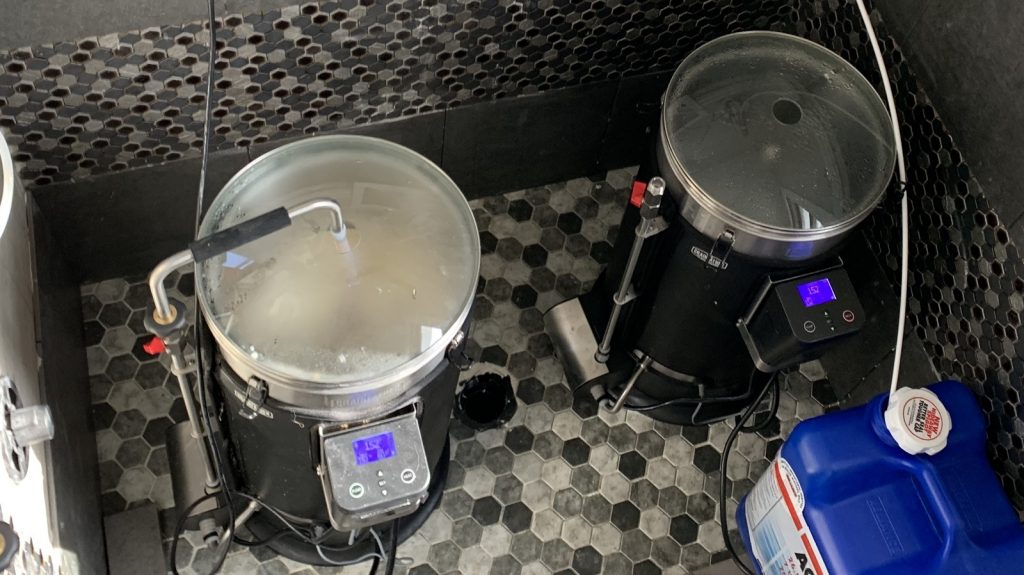
At this point, I weighed out the small kettle hop additions.
After each 60 minute mash rest, the grains were removed and sparged, after which the worts were brought to a boil with hops being added as laid out in the recipe.
At the end of each 60 minute boil, the wort was quickly chilled during transfers to sanitized fermentation vessels.
Refractometer readings revealed a curious difference in OG between the batches.
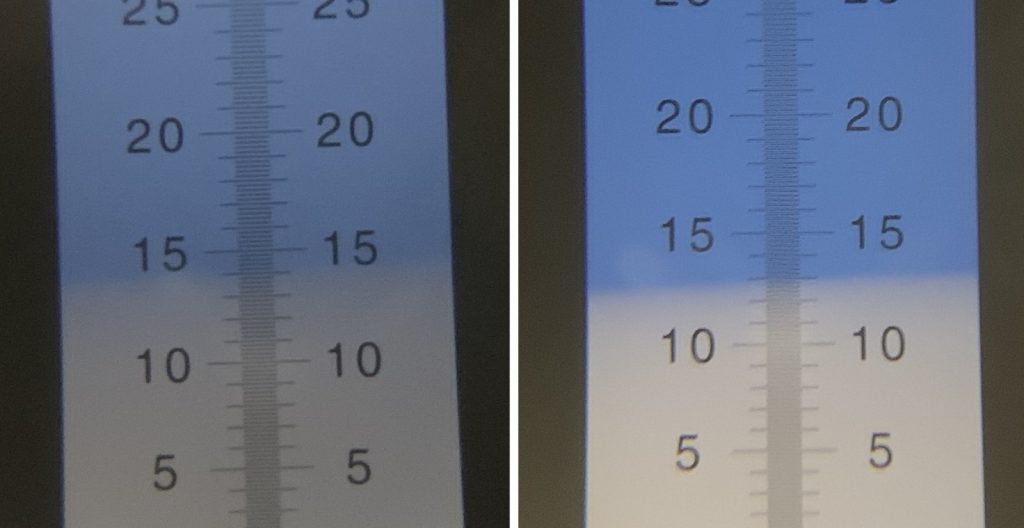
After placing the filled fermentors next to each other in my chamber, I pitched the yeast and set my controller to maintain a fermentation temperature of 64°F/18°C.
With fermentation activity absent after 2 weeks, I took hydrometer measurements showing a very slight difference FG, which remained in measurements taken 5 days later.

The beers were then racked to sanitized CO2 purged kegs.
The filled kegs were placed in my keezer and burst carbonated before the gas was reduced to serving pressure. After an additional 10 days of conditioning, the beers were ready to serve to tasters.

| RESULTS |
A total of 36 people of varying levels of experience participated in this xBmt. Each participant was served 2 samples of the beer made with cherrywood smoked malt and 1 sample of the beer made with beechwood smoked malt in different colored opaque cups then asked to identify the unique sample. A total of 18 tasters (p<0.05) would have had to accurately identify the unique sample in order to reach statistical significance, which is exactly how many did (p=0.028), indicating participants in this xBmt were able to reliably distinguish a Rauchbier made with cherrywood smoked malt from one made with an equal amount of beechwood smoked malt.
The 18 participants who made the accurate selection on the triangle test were instructed to complete a brief preference survey comparing only the beers that were different. A total of 9 tasters reported preferring the cherrywood beer, 4 liked the beechwood beer more, and 5 people had no preference despite perceiving a difference.
My Impressions: Upon initial side-by-side samplings, I felt like the cherrywood beer was a little sweeter and had a more subtle smoke flavor while the beechwood beer was more assertive in its smoke character with an almost peat-like flavor. However, out of the 3 blind triangle tests I attempted, I didn’t identify the unique sample once, indicating the impact bias had on my perception.
| DISCUSSION |
The idea that wood from various trees will produce a smoke that imparts different flavors isn’t terribly difficult to accept– after all, cherries taste different than apples, which taste different than oak leaves. For this reason, it’s not exactly shocking tasters in this xBmt were generally capable of distinguishing a Rauchbier made with beechwood smoked malt from one make with the same portion of cherrywood smoked malt. However, the differences between the beers weren’t vast enough that everyone could tell them apart, in fact I could not reliably identify the odd-beer-out in my own triangle test attempts despite knowing everything about them.
On a more objective level, the beer made with cherrywood smoked malt start with a slightly higher OG than the one made with beechwood smoked malt, which barring the influence of some extraneous variable, suggests the latter may have slightly better conversion potential. While the survey we use doesn’t measure what it is that tasters perceive as being different, I’m hard-pressed to believe it was the slight difference in alcohol, but rather more likely the characteristics imparted by each type of smoked malt.
Rauchbier may not be the next flavor of the month, but it’s certainly a unique style of beer that many find quite enjoyable, myself included, and it wouldn’t be possible without smoked malt. With the results from this xBmt indicating the type of wood used to smoke malt may have a perceptible impact, experimenting with different types of smoked malt may not be a bad idea for those who enjoy such styles. As for me, I was pleased with these beers and definitely will be brewing more in the future using different types of smoked malt.
If you have any thoughts about this xBmt, please do not hesitate to share in the comments section below!
Support Brülosophy In Style!
All designs are available in various colors and sizes on Amazon!
Follow Brülosophy on:
FACEBOOK | TWITTER | INSTAGRAM
If you enjoy this stuff and feel compelled to support Brulosophy.com, please check out the Support page for details on how you can very easily do so. Thanks!



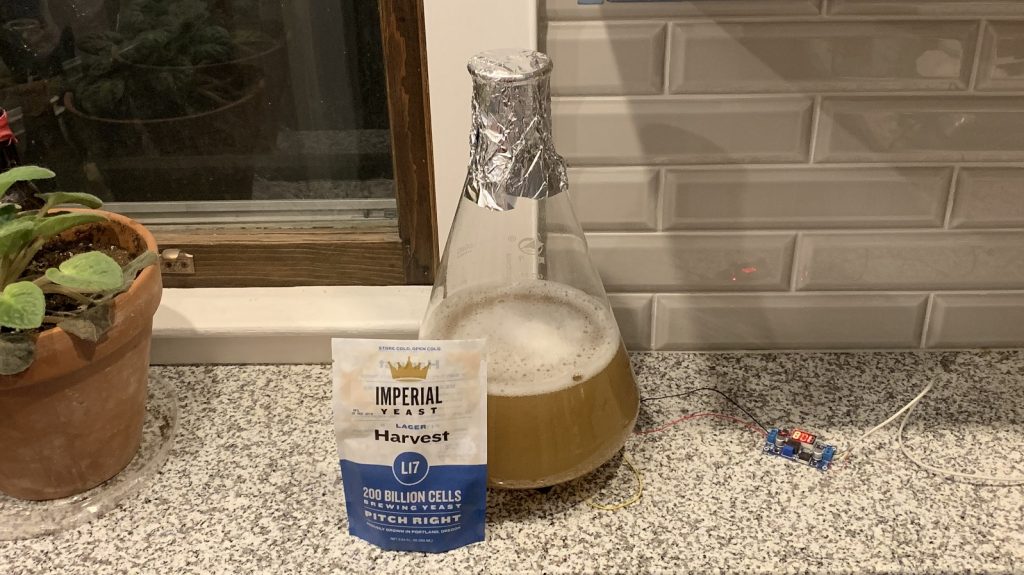
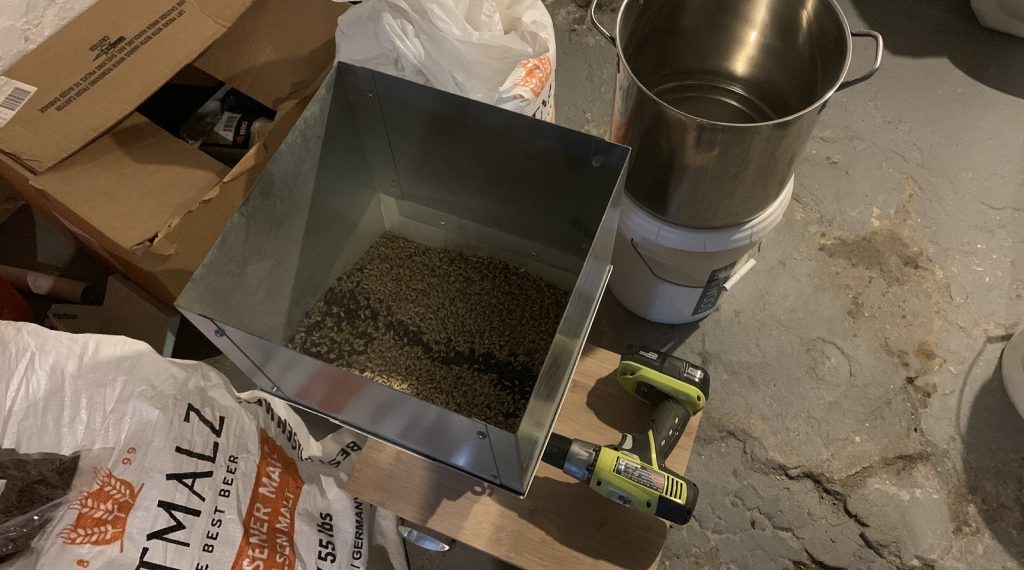
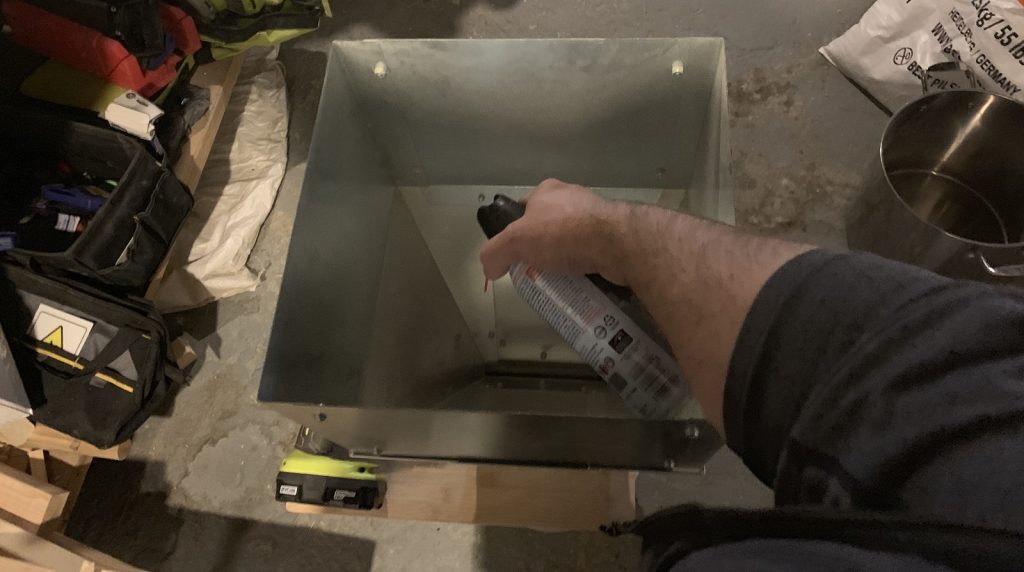
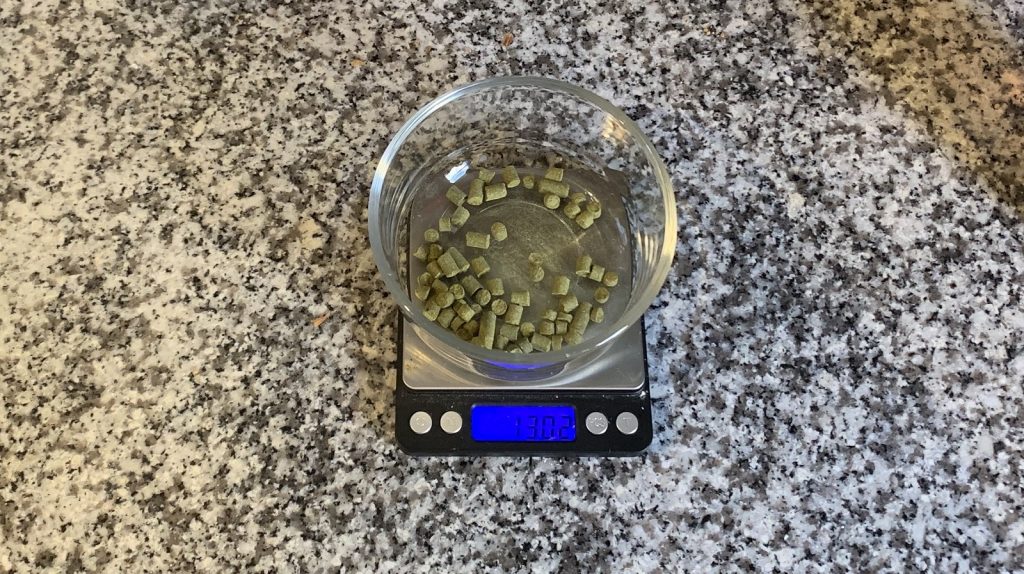
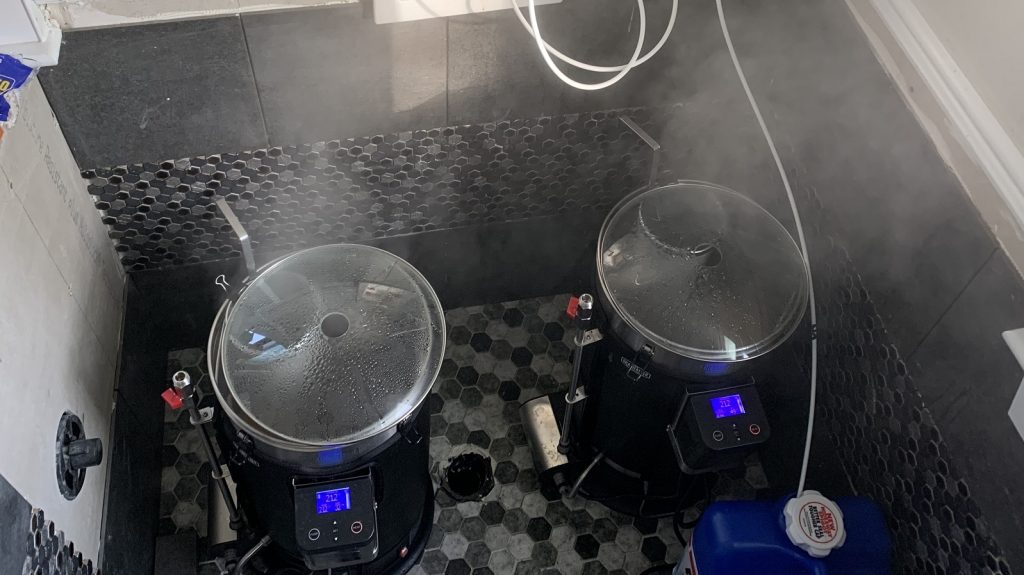
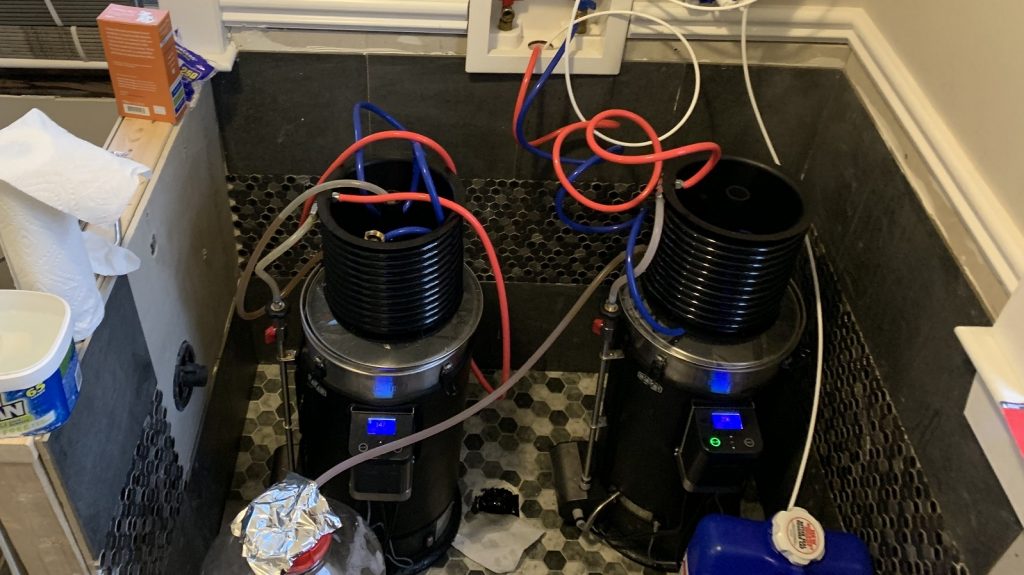
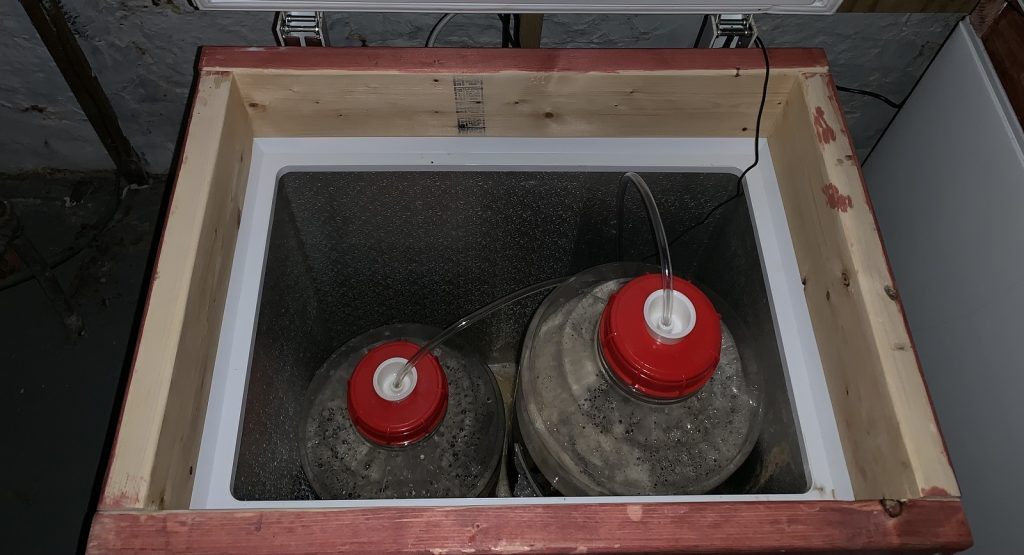











14 thoughts on “exBEERiment | Smoked Malt: Cherrywood vs. Beechwood In A Rauchbier”
I’ve heard that the age of the malt impacts its intensity. Perhaps Brulosophy has already done this experiment?
Marshall did an xBmt where he crushed grains and stored them in a bag for a few weeks vs crushing just prior to brewing.
https://brulosophy.com/2018/10/29/the-impact-of-age-on-crushed-malt-exbeeriment-results/
Malcolm also tested old liquid malt extract vs fresh.
https://brulosophy.com/2017/11/27/the-impact-of-age-on-liquid-malt-extract-exbeeriment-results/
Thanks for this exBEERiment. I’m one of the few brewers who enjoys smoked beers enough to keep one on a tap at all times. I’ve vacillated on the smoked wood types but keep coming back to the cherrywood for the sweeter, less astringent taste. As an aside, I’m a big fan of tinctures for testing adjunct flavor combinations. A few drops in a pint of beer is easier than 5-gallons for getting the idea of whether a flavor works. I’ve considered making a tea/tincture of cherrywood for the same purpose. What would be the best way to go about this? A light crush of the grain and cold steeping? Would vodka draw out too much astringency from the grain? How long would a water-based cold-steeped tea last in the fridge?
Any thoughts you have would be appreciated.
If I were testing out different recipes I’d just just do small batches (say, 1 gallon or so) and scale up from there. But your tincture idea would probably work pretty well too, though I’d skip the vodka and use water. Briess has a nice write up about steeping grains for sensory purposes, definitely worth a read.
http://blog.brewingwithbriess.com/malt-sensory-methods-you-can-perform-in-your-own-home-or-brewery/
Looking at the spec for both malts, the Briess Cherrywood Smoked Malt actually has a higher extract than the Weyermann Beechwood Smoked. That explains the higher SG in that beer. If I were to take an educated guess, Weyermann uses lots or batches of barley higher in protein to make the Beechwood Smoked Malt.
The name of that Franconian town is actually “Bamberg” not “Bamburg” (towns with names “Baumburg” and “Bamburgh” exist though).
At least in the Schlenkerla Märzen and Doppelbock Eiche they use 100% smoked malt according to their website.
Another experiment with exactly the right number of participants identifying the odd beer out to achieve significance. I’m saying the same thing I was saying last time I i pointed this out
K.
I don’t know why you find this so suspicious. The sample sizes of these experiments are always so small that hitting ‘exactly the right number’ shouldn’t be so surprising. It’s not like 500 people did the triangle test.
(Also, I think it’s weird that you’d think the brulosophy team would fake data.)
Unless my math is wrong, there should have only been less than 2 gravity points difference b/w the beers based on the specs for the two smoked malts. There’s only 2.5# of smoked malt in the beers and the extraction difference is only 3.5% different.
Perhaps you should give a piwo grodowski a try. Nice refreshing smoked beer.
You’ve a minor typo ”For this reason, it’s not exactly shocking tasters in this xBmt were generally capable of distinguishing a –>Raucbier<– made with beechwood smoked malt from one make with the same portion of cherrywood smoked malt''
And the final paragraph omits a “[with]out” resulting in the perplexing statement that Rauchbier “…wouldn’t be possible with smoked malt.”
I’m surprised by the grain bill. I recently made a rauchbier which I loved and my homebrew club thoroughly enjoyed.. But my grain bill was 93% smoked malts, 7% carafa II. Used a small amount of Fuggle and lager yeast.